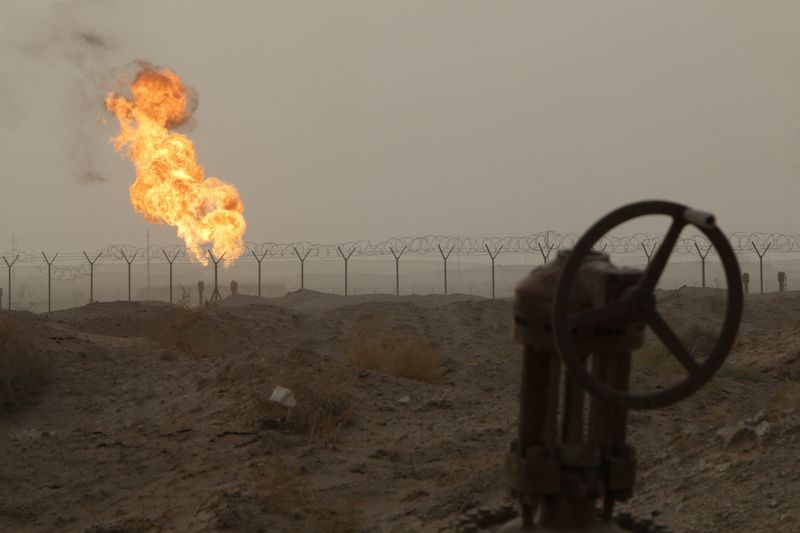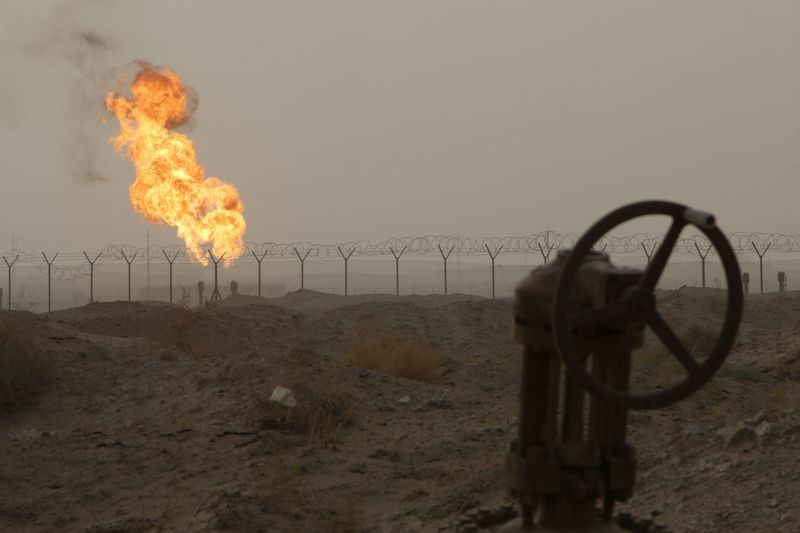
By Ahmad Ghaddar and Arunima Kumar
LONDON (Reuters) -Oil prices pared gains in volatile trade on Tuesday as fears of an escalation in the Middle East conflict and a drop in production at Libya’s largest Sharara oilfield raised the prospect of tight supplies.
However, buying was capped by a weak demand outlook in China, while a global market recovery from a sell-off on Monday provided support.
Brent crude futures were up 12 cents, or 0.16%, to $76.42 a barrel at 1001 GMT, while U.S. West Texas Intermediate crude futures were up 22 cents, or 0.3%, to $73.16. Both contracts gained over $1 a barrel earlier in the session.
“Fears over a slowdown in the U.S. and weak growth in China look set to weigh heavily on prices, and the increased production from OPEC+ from Q4 adds another headwind that will prevent prices recovering in the near term,” said Panmure Liberum analyst Ashley Kelty.
On Monday, both benchmarks fell about 1% as U.S. recession worries hammered global stock markets.
Oil prices are finding a floor as concern mounts that Iran, a major Middle Eastern producer, may retaliate against Israel and the U.S. following the assassination of a Hamas leader in Tehran and an Israeli attack that killed a Hezbollah commander in Lebanon, potentially leading to a wider regional war.
On Monday, at least five U.S. personnel were injured in an attack against a military base in Iraq, U.S. officials told Reuters. It was unclear whether the attack was linked to the retaliation threats.
At the same time, weak demand figures, particularly in China, have limited any oil market rallies.
” (The) long-awaited seasonal upturn in demand in Q3 seems to be disappointing. Use of on-road fuels like gasoline and diesel is coming below initial bullish expectations,” Onyx Capital Group analyst Harry Tchilinguirian said.
Oil giant Saudi Aramco (TADAWUL:2222) on Tuesday also reported a 3.4% fall in second-quarter profit on lower crude volumes and softer refining margins.
Aramco’s CEO said the company was seeing significant growth in China and added that the fundamentals do not support a drop in oil prices.
In the U.S., the world’s biggest oil consumer, data on Monday showed the service sector recovered from a four-year low in July.

A broader rally in Asian equity markets overnight, after they plunged on Monday, also supported the oil market.
Lower production at Libya’s 300,000 barrel-per-day Sharara oil field buoyed prices further. Output at the field, one of the country’s largest, has fallen by around 20% due to protests.
This post is originally published on INVESTING.




